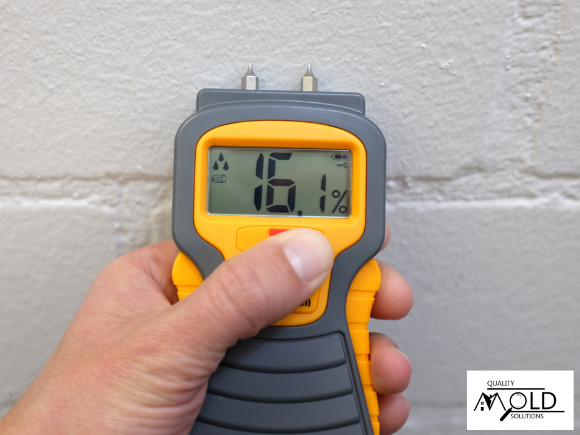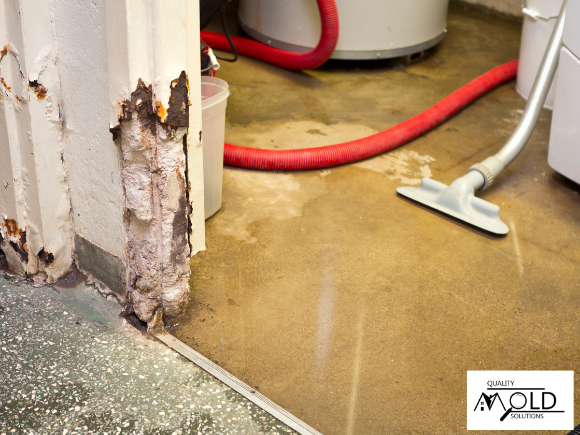Water damage is one of the most common issues homeowners face, and while it can cause immediate harm to property, its lasting effects—especially water damage mold growth—are often even more concerning. The connection between water damage and mold is well-established, and addressing water damage quickly is crucial to preventing mold from taking hold. In this post, we’ll explore how water damage leads to mold growth and what steps you can take to prevent it from becoming a bigger problem.
The Connection: Water Damage Mold Growth
Mold is a type of fungus that thrives in damp, humid environments. When water enters your home—whether from a leak, flooding, or even high humidity—it creates the perfect conditions for mold to grow. Mold spores are naturally present in the air and on surfaces, but they only become active and start growing when moisture is introduced.
 Here’s a breakdown of how water damage can create a mold problem:
Here’s a breakdown of how water damage can create a mold problem:
-
Moisture is the Catalyst
- Mold needs moisture to grow. Water damage from broken pipes, leaks, or flooding introduces moisture into walls, ceilings, floors, and other surfaces. This moisture provides the fuel mold spores need to flourish. Mold can start growing within 24 to 48 hours of water exposure, making quick action critical.
-
Porous Materials are Vulnerable
- Water damage mold grows on porous materials like drywall, carpeting, and insulation. These materials are especially susceptible to mold growth and can absorb and retain moisture, creating a breeding ground for mold. Even after the water is removed, these materials can stay damp, allowing mold to continue growing unseen.
-
Humidity Plays a Role
- Even without direct water intrusion, high indoor humidity can promote mold growth. For example, areas like bathrooms, kitchens, and basements, which are prone to higher humidity levels, can develop mold over time if they’re not properly ventilated. Water damage that increases the humidity in your home makes these areas even more prone to mold issues.
-
Hidden Mold Can Develop
- Water damage mold often occurs in hidden areas, such as behind walls or under floors. When this mold growth happens in concealed spaces, it can go unnoticed for weeks or months. Hidden mold can cause structural damage and lead to health issues for inhabitants, even if the mold isn’t immediately visible.
Addressing Water Damage Mold Growth Quickly is Essential
-
Prevent Mold Growth
- Since mold can begin growing within 24 to 48 hours of water exposure, time is of the essence when dealing with water damage. The faster you dry out the affected areas, the lower the risk of mold taking hold. Addressing water damage immediately can save you from costly mold remediation down the line.
-
Reduce Health Risks
- Mold exposure can lead to a variety of health problems, including respiratory issues, allergic reactions, and asthma attacks. Prolonged exposure to mold, particularly in water-damaged homes, can exacerbate these health problems. By addressing water damage quickly, you reduce the risk of mold growth and the associated health hazards.
-
Prevent Structural Damage
- Mold is not only harmful to your health but also to the structural integrity of your home. Over time, mold can break down materials like wood and drywall, leading to serious structural issues. By dealing with water damage right away, you prevent mold from spreading and weakening the foundation of your home.
Taking Steps to Prevent Water Damage Mold
-
 Remove Excess Water Immediately
Remove Excess Water Immediately- After any type of water damage, your first priority should be removing standing water from the affected area. Use a wet vacuum, mop, or towels to absorb as much water as possible. If the water damage is severe, you may need to hire a professional water removal service.
-
Dry Out the Area
- After the water has been removed, it’s crucial to dry out the area thoroughly. Use fans, dehumidifiers, and open windows to promote airflow and dry the space. If water has seeped into walls, ceilings, or floors, you may need to remove and replace damaged materials to prevent mold from growing.
-
Inspect for Hidden Water Damage
- Water damage is often hidden behind walls or under floors, so it’s important to inspect these areas for signs of moisture. Use a moisture meter to check for dampness in walls, and consider hiring a professional to conduct a more thorough inspection if you suspect hidden water damage.
-
Monitor Humidity Levels
- To prevent future mold growth, keep indoor humidity levels between 30% and 50%. Use a dehumidifier in moisture-prone areas like basements, and ensure proper ventilation in bathrooms and kitchens. Regularly monitor humidity levels to ensure they remain in the safe range.
-
Remove Damaged Materials
- If water damage has affected porous materials like drywall, carpeting, or insulation, it’s best to remove and replace them. These materials are difficult to dry completely and can harbor mold even after the water is gone. Replacing water-damaged materials is an important step in preventing mold from spreading.
-
Schedule a Professional Mold Inspection
- If your home has experienced significant water damage, scheduling a professional mold inspection is a smart precaution. A certified mold inspector can detect hidden mold and assess whether remediation is necessary. Early detection can save you from larger problems later on.


